Bank Holiday breaks on the Isle of Wight
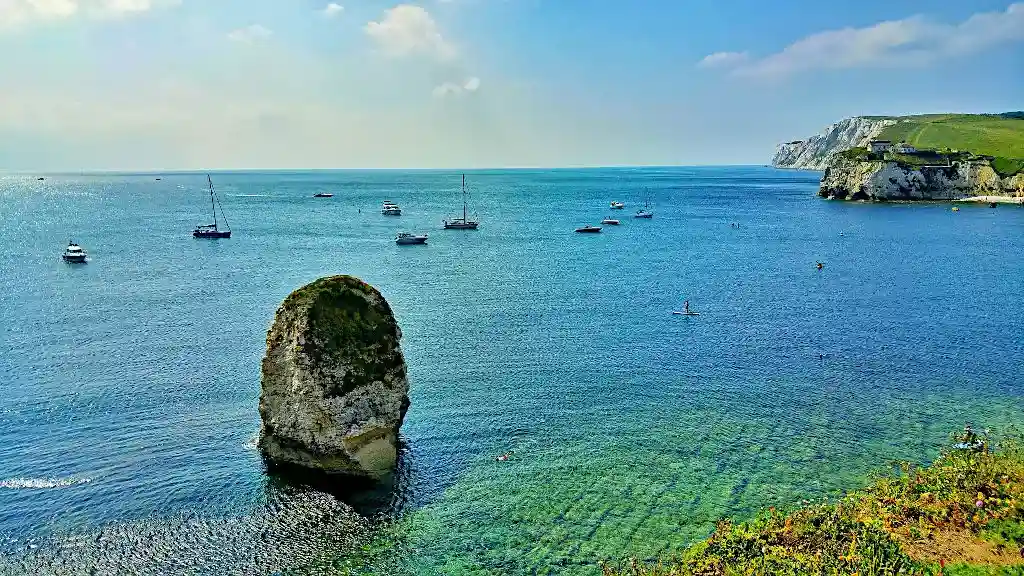
Come and see the sun and sea
Holidays are rare and precious, aren't they? So, everyone tries to make the most of them. And that's precisely why you'll love a bank holiday break on the Isle of Wight (or IoW for short). The island is located just off the south coast of Hampshire, making it easy and quick to get to.
Ferries and hovercraft regularly cross the Solent, taking sun-seeking day trippers from Southampton and Portsmouth to the island's quieter and less tranquil spots. The Isle of Wight is easy to get to. But hard to leave.
CONTENTS
- 1. Bank Holiday breaks on the Isle of Wight
- 2. An island break with a difference
- 3. Coastal pearls
- 4. English Heritage treasures on the Isle of Wight
- 5. Beaches, sea view and beautiful nature
- 6. Best family activities on the Isle of Wight
- 7. Travel to the Isle of Wight
- 8. Isle of Wight: Weather and climate
- 9. More great UK Bank Holiday breaks
Bank Holiday breaks on the Isle of Wight
The Isle of Wight is an island off the south coast of England, just opposite the River Test estuary. The diamond-shaped island is well-known for its chalk cliffs, open heathland, and beaches for every taste. A mild climate, warm summers and a decent amount of sunshine make it a perfect destination for short and unforgettable Bank Holiday breaks.
Set foot on the shores, and you'll find yourself surrounded by some of Britain's most beautiful landscapes. Miles of golden sands and cliffs that plunge into the sea await you.
An island break with a difference

No matter if you want beautiful scenery or just some time away from it all — you can have it all on the Isle of Wight. You'll just be busy discovering that the island has something for everyone.
Miles and miles of coastline
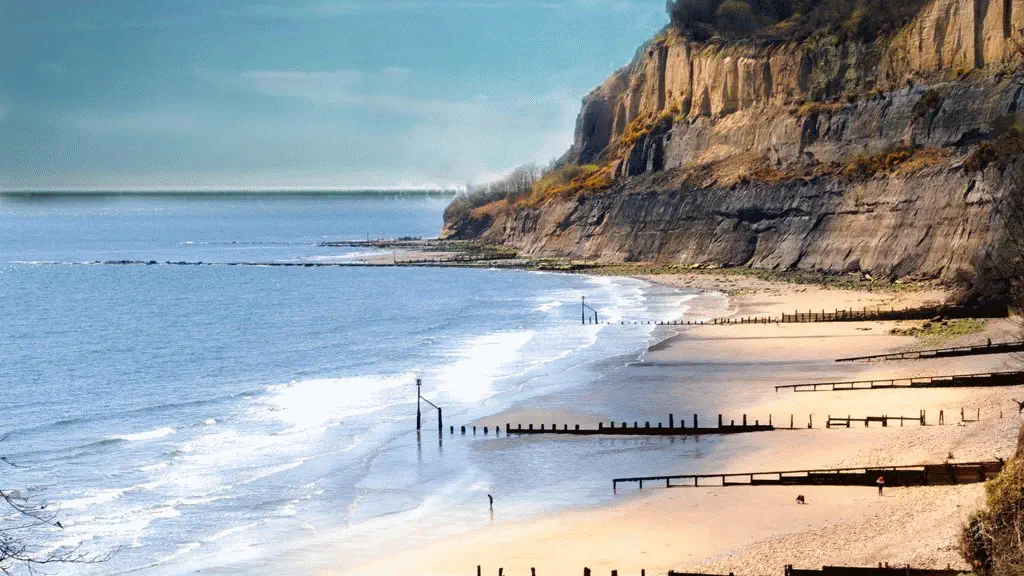
Where do you get the most coastline? On an island, of course.
So, it's only natural (pun intended) that this enchanting stretch of land is famous for one thing above all: a wonderful coastline. Miles of golden sand, green hills and grain fields in the background, picturesque little villages and grazing sheep in between.
More than 57 miles (92 kilometres) of coastline and around 200 miles (322 kilometres) of hiking trails invite you to explore the island. Take a drive along narrow country lanes or a long walk amidst picturesque scenery. Or follow the cycle tracks across the island that range from short, road-based routes to long, hilly off-road trails and everything in between.
On this island, everything is within reach

If your idea of the perfect holiday is one in which you can do as little or as much as you want, then the Isle of Wight is for you. It's a slow-paced haven from the hustle and bustle of life on mainland Britain. It's also a small island. It covers just around 390 km (150 sq mi) of area (36 miles from east to west and 21 miles from north to south), so there's plenty to explore without spending all day travelling from one side to another.
Coastal pearls
Thatched cottages, tearooms and gift shops
Godshill village is as picturesque as it gets. A hamlet north of St Catherine's Oratory and Appuldurcombe House, it's a quintessentially English village. Thatched cottages and a village green, pubs and tearooms and shops selling crafts and gifts attract visitors. No wonder, Godshill is popular: You can come here to soak up the atmosphere and enjoy a nice cuppa and some scones.
If you're in the area, head up to All Saints' Church, a medieval cruciform parish church built of distinctive grey stone.
Since 1952, kids and adults alike have enjoyed a visit to the privately owned Godshill Model Village on the High Street in Godshill. This model village is a perfect place for a relaxing day out with friends or family. The park has many activities for children and adults to enjoy, and there are over 40 acres of land dedicated to this beautiful little village. Made up of over 100 buildings and structures, the model village includes tiny churches, pubs and shops as well as a miniature railway, funfair rides, a lake and even a farmhouse with animals roaming around it!
Bembridge
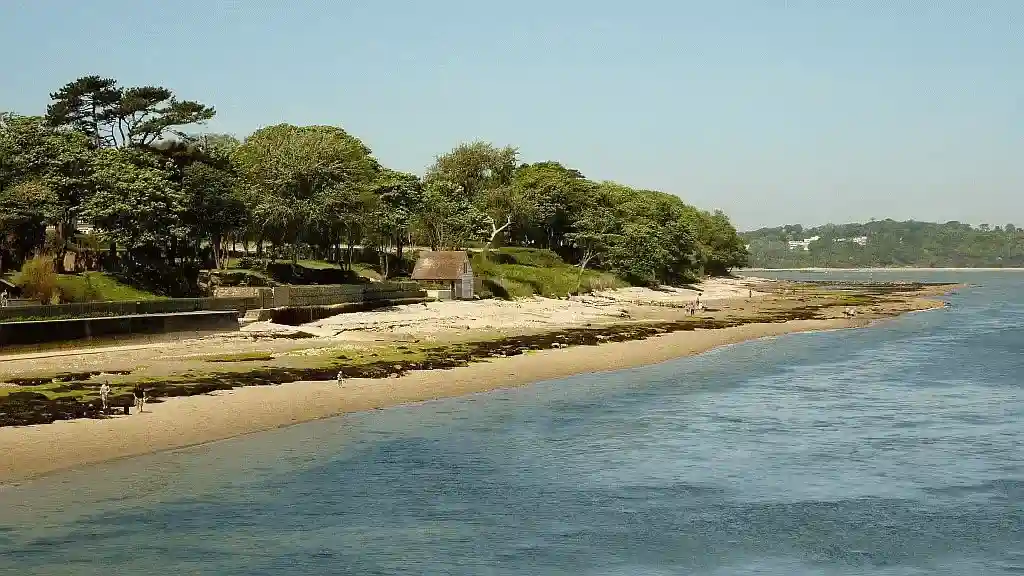
Bembridge is a cute little seaside village situated on the eastern tip of the island. There is a beach between Bembridge Harbour and the RNLI lifeboat station pier, which makes for a lovely walk along the shingle beach heading west. Many rock pooling opportunities are to be found at this semi-rocky shore. You can have a wonderful view across The Solent, and it is best to walk at low tide.
Yarmouth
Yarmouth is situated on the northwest coast. It's a marina, market town and gateway to the Isle of Wight hinterland. Car ferries cross the Solent at regular intervals from the Wightlink ferry terminal, taking pedestrians and vehicles quickly and smoothly onto the island and across to Lymington. The town itself is also well worth a stroll.
While waiting for the ferry, shorten that boredom and walk over to some of the attractions Yarmouth offers.
St James Church is just a short walk from the harbour and a fine example of early 17th-century church architecture. A guidebook is available in the church, detailing its eventful history of French raids, destruction and reconstruction.
Yarmouth Pier offers nice views towards the Solent, the village and the ferry terminal. It's a nice place to sit and watch the boats sail by.
English Heritage treasures on the Isle of Wight
Stately mansions and a royal holiday home
One of England's most historic regions, here are the finest historic houses, castles and monuments dating from the medieval to post-war eras.
Osborne
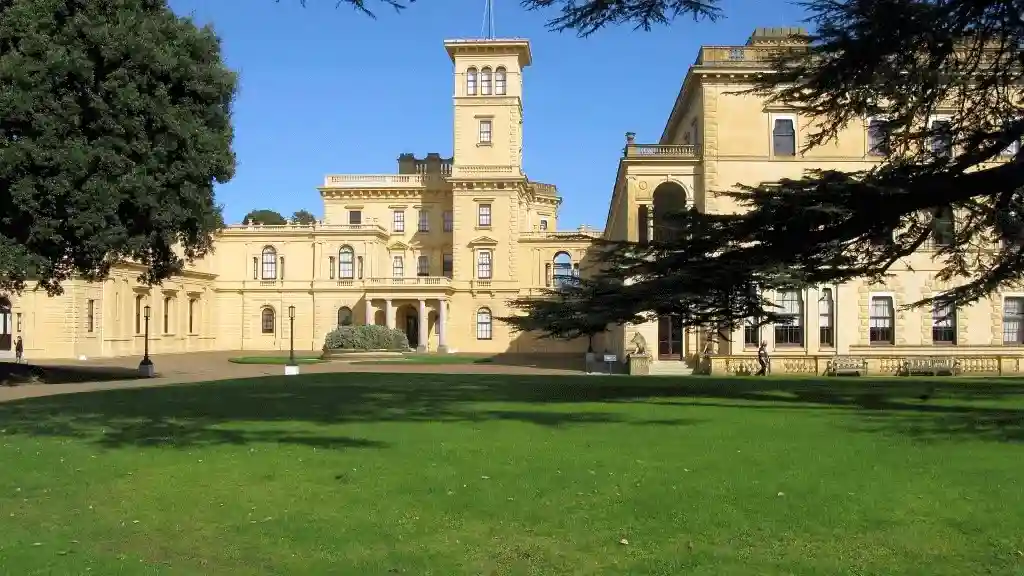
Osborne House was Queen Victoria’s seaside country home. For more than half of Queen Victoria's life, she spent her holidays at Osborne with Prince Albert. She died here in 1901 after a 48-year reign.
The house and gardens are a beautiful example of Italian Renaissance architecture of the mid-19th century. Consider visiting Osborne House and take some time to enjoy the Queen's private beach, her "bathing machine" to give her some privacy while bathing, the vast and lovely gardens and everything else this remarkable place has to offer.
Yarmouth Castle
Yarmouth Castle is a small coastal fortress right next to the ferry, dating from the Tudor period (Henry VIII).
It is managed and maintained by the English Heritage Trust and is thus open to members free of charge. Once inside, you can explore the castle at your leisure, and stroll through some furnished rooms to make your way up to the grassy ramparts. From there, you have a beautiful view of the harbour, and picnic tables invite you to have a snack and enjoy the view of the incoming ships.
Carisbrooke Castle

The 1000-year-old castle is steeped in history, having started life as a Saxon fortress before being transformed and fortified under Norman rule.
One particular "guest" of the castle was treated with royal courteousness: King Charles I was imprisoned here before his execution in London in 1649. Today, you can visit the room where he slept and wonder why a royal prisoner needed a bowling green to play on during his time in prison.
Queen Victoria's youngest (favourite) daughter, Princess Beatrice, made the castle her summer residence in 1913.
Today, the Princess Beatrice Garden is a tribute to this time. Situated within the grounds of Carisbrooke Castle and created in honour of Queen Victoria's daughter, the gardens have been a popular attraction since 2009.
Medieval ramparts, mounds and massive walls are not the only attractions. In summer, history comes alive with the clamour of knights' tournaments and jousts. To entertain the crowds and to impress the ladies, fearless royal knights fight on horseback and in full armour, wielding lances and swords — a wonderful and exciting display of courage and chivalry!
Appuldurcombe House

Any visit to the Isle of Wight is incomplete without a visit to Appuldurcombe House. The estate is situated on the chalk downs of the Isle of Wight, between Godshill and Wroxall. The location is remote enough to be idyllic, but not too far from the coast.
Appuldurcombe House began as a grand home for the Worsley family in the early 18th century. Nowadays, it's popular among visitors, since it offers free entrance and has a large car park nearby.
Owing to structural damage during WWII, the roof collapsed and was never replaced. This is why the sky is the limit at Appuldurcombe House — it's a beautiful facade without a roof.
St Catherine's Oratory
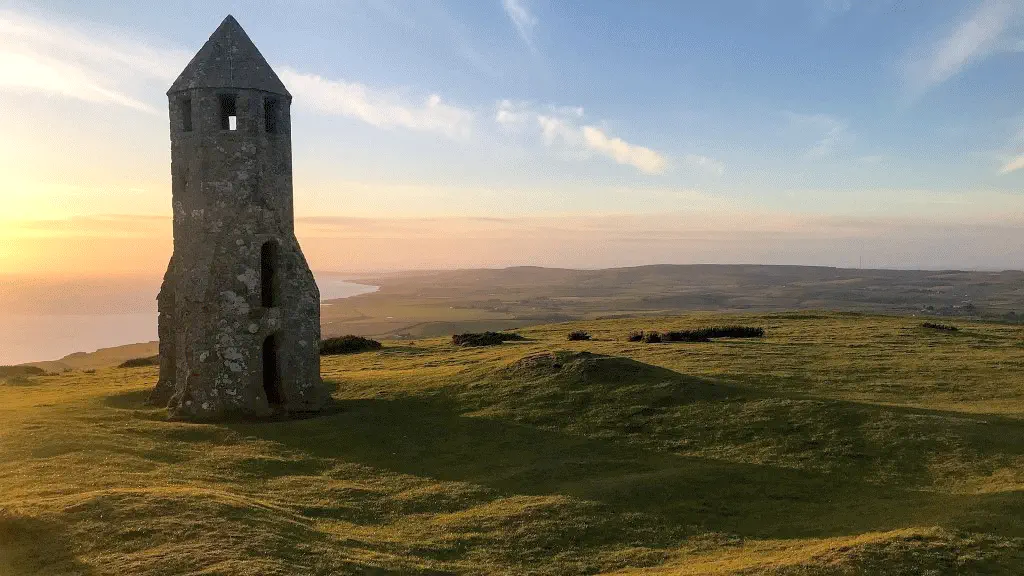
Some say it looks like a pepper pot, some compare it to a medieval stone rocket that has just landed on the southern cliffs... St Catherine's Oratory will in any case impress you.
This medieval octagonal tower was built in 1328 as the penitential work of a local landowner and is the only remnant of an oratory. A relic of the past, it stands on one of the highest parts of the Isle of Wight, looking over the English Channel.
Park your car at the Blackgang chine car park and walk up the fairly steep hill. There are also mountain bike trails nearby that can get quite steep, too. You will be rewarded with a breathtaking view of the west coast of the island and the Needles. But beware: It can get blustery sometimes, so dress accordingly!
Quarr Abbey

Quarr Abbey on the Isle of Wight has been a working monastery for over 900 years.
The abbey is situated on a quiet corner of the Isle of Wight's northern coast, between Fishbourne and Ryde. It was founded in the 12th century as a Cistercian monastery, secularized in the 16th century and rebuilt by Benedictine monks from 1907 onwards.
The grounds offer peace, tranquillity and relaxing walks through beautiful woodland and serene gardens.
The Abbey's farm shop sells local produce including honey, candles and chutneys. There is also a tea shop where you can sit down for a cup of tea or coffee, scones or a slice of delicious cake.
The abbey is open all year round and entry is free. There are guided tours of the grounds on selected days in summer and a small pig farm to entertain the kids.
Beaches, sea view and beautiful nature
Explore the coast and hit the beach
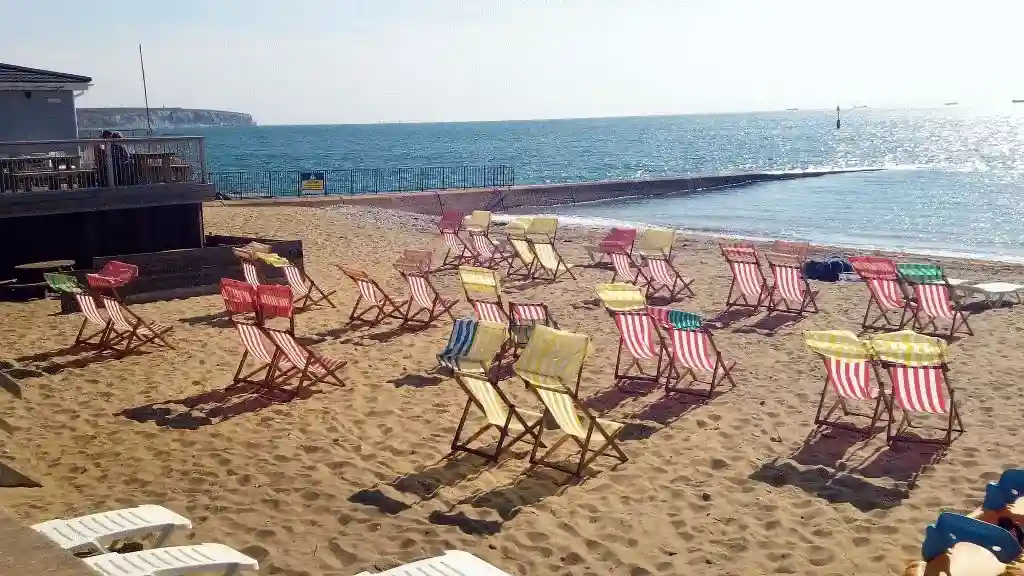
Beachwise, the island is blessed with 57 miles of coastline, so you won't have a problem finding a lovely spot for a swim or a walk or some dinosaur footprints.
The island is roughly divided into three main beach areas: the south-eastern coastline from Ventnor up to Bembridge and St Helens, the northern area around Cowes that is partly an Area of Outstanding Natural Beauty and the western tip of the isle near Freshwater.
The southeast coast consists mainly of wide, sandy beaches, with some rocky outcrops accessible at low tide. The west coast has a series of dramatic and beautiful cliffs, and the northern coast has several pebbly beaches which are popular with surfers.
Alum Bay is located on the West Coast and adjacent to the Isle of Wight's most famous landmark, The Needles. The main car park is located at the bay, so any visitor who wants to get a good look at The Needles should stop by this beach first. The cliffs of the bay display wonderful sandy, multicoloured layers above the white chalk. Some claim there are 21 different shades of colour! True or not, you can buy your holiday souvenir here: The colourful sands of Alum Bay, which you can fill yourself into a glass shape. A chairlift takes visitors from a little amusement park down to the shingle beach during summer.
The Needles are a famous trifold rock formation at the westernmost tip of the Isle of Wight. Like a string of pearls, three distinctive chalk rocks extend from the mainland into the sea.
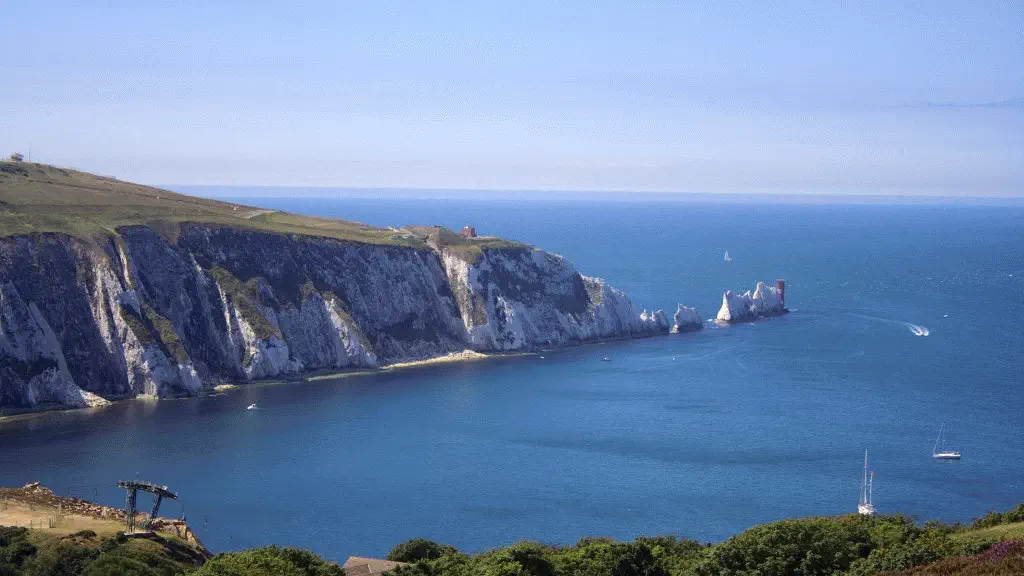
At the end of the outermost chalk rock, the red-and-white Needles Lighthouse is a beacon in the darkness, warning boats away from the rocks. Its powerful beam pierces the fog and mist as it reaches out across the water.
Freshwater Bay offers a nice stretch of beach located on the Western tip of the island. Nestled between tall, white cliffs and the deep blue sea, the beach consists of grey flint, chalk pebbles and some sandy patches. It's a quieter spot near a small village, great for families and those who want to kayak or paddleboard. A rocky ledge is accessible when the tide is low, and there are some old smugglers' caves beneath the chalk cliffs. Poet Laureate Alfred Lord Tennyson lived near Freshwater for a large part of his life. Now, the hills above Freshwater bear his name.
Compton Bay is another lovely beach on the southwestern part of the island. Take the staircase from the car park down to the sandy beach that stretches for two miles. There, looking westwards, one can see white chalky cliffs running towards the Needles. The waves are big enough for surfers and bodyboarders. Bathers can also enjoy a gentle swim when there is a calm day. Here's something for fossil-hunters, too. There are some well-preserved dinosaur footprints on the beach when the tide is low.
Ventnor Beach is situated on the South East Coast of the Isle of Wight. It's a rather narrow stretch of red shingle and sand beach (ca. 300 m / ca 1000 ft), accessible via a steep walk down from the car park. Ventnor town is quite hilly. Be prepared to take a few extra steps if you want to avoid the pricier parking fees down at the esplanade.

With deckchairs for rent, ice cream parlours, seafront cafés and fish & chips abound, it's a great place for a calm family day. The beach is particularly nice, having a friendly and quiet place like Ventnor and its promenade as a backdrop.
Sandown Bay on the east coast of the island offers lovely views from the Isle of Wight coast path that runs on top of the cliffs.

There is a wide and sheltered stretch of sandy "bucket and spade" beach that runs for 5 miles along the promenade. You'll get a well-developed seaside resort and tourist area from Shanklin in the south to Culver Down in the north. Sandown Bay comes complete with a pleasure pier and an amusement arcade, crazy golf and slot machines.
Shanklin Beach is situated on the South East Coast of the Island.

This beach also has a large car park, and it is a popular location for families, located next to Shanklin Chine which is a historic attraction that you can visit while you are there!
Best family activities on the Isle of Wight
A true adventure playground for the whole family
The Isle of Wight is very popular with families, so here's a list of some of the best things to do for families with children aged between 2 and 13 years old.
Amazon Zoo World is an adventure park in East Cowes on the Isle of Wight. The park was created to celebrate all things Amazon. With over 200 species of mammals, birds, reptiles and insects from the rainforest, it features wallabies, monkeys, lemurs, armadillos, snakes and lizards. There are also reptile enclosures, a tropical garden and a butterfly house.
Blackgang Chine (Land of Imagination) is a theme park on the south coast of the island. There are dinosaurs, exciting rides and shows for all ages including pirate ships, rollercoasters, fairy villages and rides based on characters such as Alice in Wonderland or Cinderella.
Shanklin Chine is another historic gorge on the island and has been developed into a family attraction. Best to visit at dusk, when all streams and waterfalls are illuminated by LED lights. You can walk the narrow paths in twilight down towards Shanklin beach.
Travel to the Isle of Wight
If you are planning a trip to the Isle of Wight, you should know how to get there
Here are some tips for getting to the Isle of Wight and travelling around the area.
Isle of Wight flight connections
The rare specimen among us who have a pilot's licence can land their private plane on the grassy runways of Sandown or Bembridge airports.
For continental travellers, the best option is to fly either to London Gatwick or Heathrow and then take a bus or train to Portsmouth or Southampton. If you want to shorten the travel time, you can also fly straight to Portsmouth or Southampton and travel on from there.
Train links to the Isle of Wight
If you're looking for train links to the Isle of Wight, there are several options available by South Western Railway. You can purchase a through ticket that includes ferry travel if you want a train ride from London Waterloo to any of the Island Line's stations. Trains from major mainland cities like London, Oxford, Bristol or Birmingham take between 2-3 hours to West Cowes on the Isle of Wight.
The Island Line is the island train service, connecting the towns of Ryde, Brading, Sandown, Lake and Shanklin with former London Underground electric trains.
Road links to the Isle of Wight
Getting to the Isle of Wight by car is relatively easy as there are good car ferry connections.
On the island, A-roads connect all the major towns. If you want to explore the island by bike, there are many quiet country roads and cycle trails to enjoy.
Ferries and hovercraft to/from the Isle of Wight
You can get to the island by ferry/hovercraft from Portsmouth, Southampton, and Lymington. At peak season, there are almost 200 daily ferry connections available per day.
Portsmouth: The Southsea Hoverport terminal is located right next to Clarence Pier, a classic pier/amusement park. The hovercraft service takes about 10 minutes to the Isle of Wight.
Wightlink ferry takes around 20 minutes for the 20-mile journey from Portsmouth harbour to Ryde Pier, where you can catch an "Island line", the Isle of Wight's train line.
From Southampton, there is a car ferry service to East Cowes, and Lymington is connected to Yarmouth by car ferry as well.
Ports with ferry service on the Isle of Wight: Ryde, East Cowes, Fishbourne and Yarmouth.
Useful links
Getting to the Isle of Wight Hover Travel Wightlink ferries
Isle of Wight: Weather and climate
The Isle of Wight climate is mild, and the region is recognized for its pleasant summers. Summer temperatures in the Isle of Wight are pretty similar to the London area, which is the warmest part of the UK.
The hottest months of the year are July and August. December is the month with the least sunshine, and July is the sunniest. The island enjoys about 2,000 hours of sunshine a year.
| Temp | J | F | M | A | M | J | J | A | S | O | N | D |
|---|---|---|---|---|---|---|---|---|---|---|---|---|
| Max | 11 | 11 | 11 | 11 | 15 | 20 | 23 | 20 | 20 | 18 | 15 | 13 |
| Min | 2 | 1 | 3 | 4 | 7 | 12 | 14 | 15 | 14 | 12 | 4 | 6 |